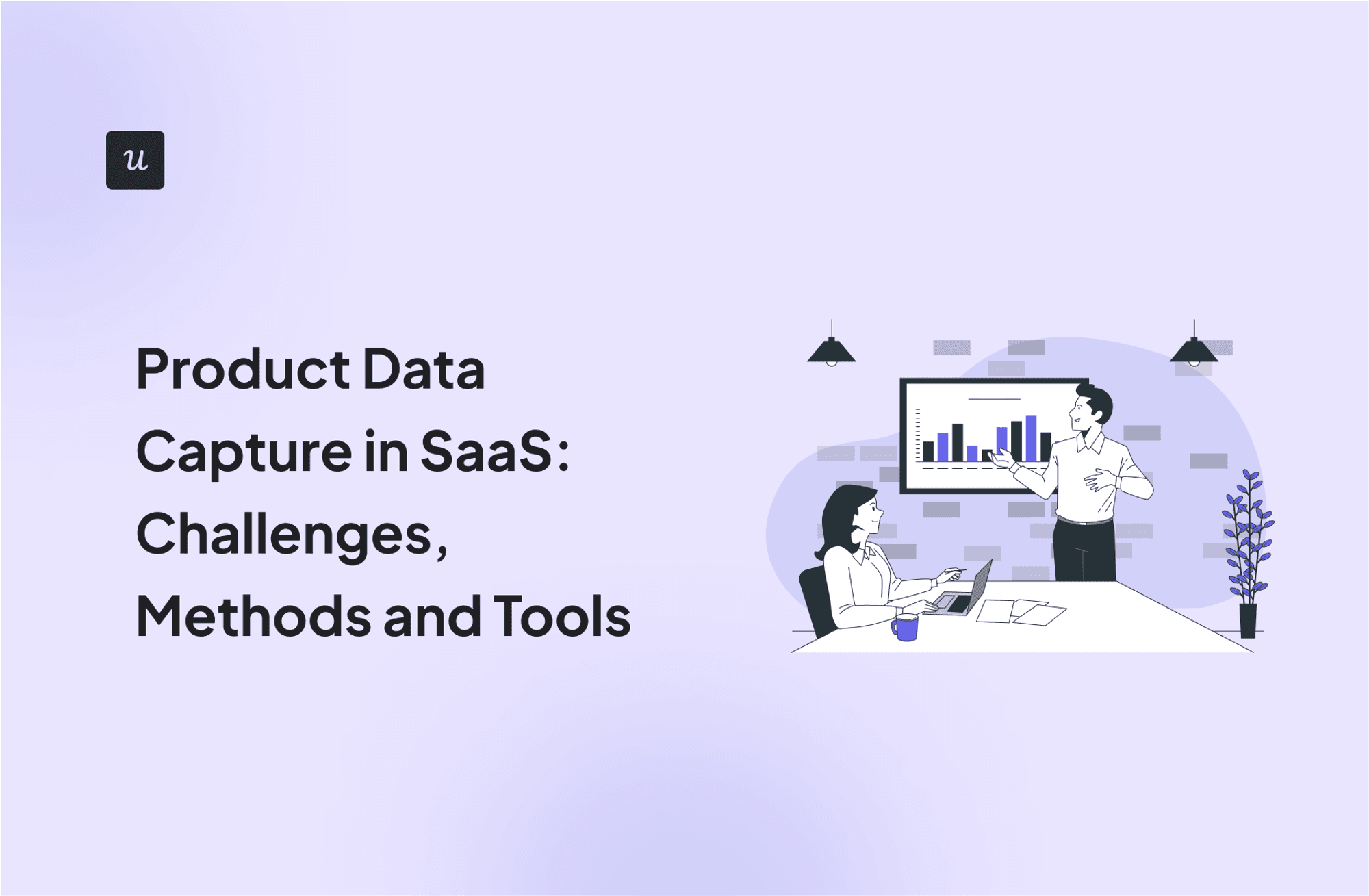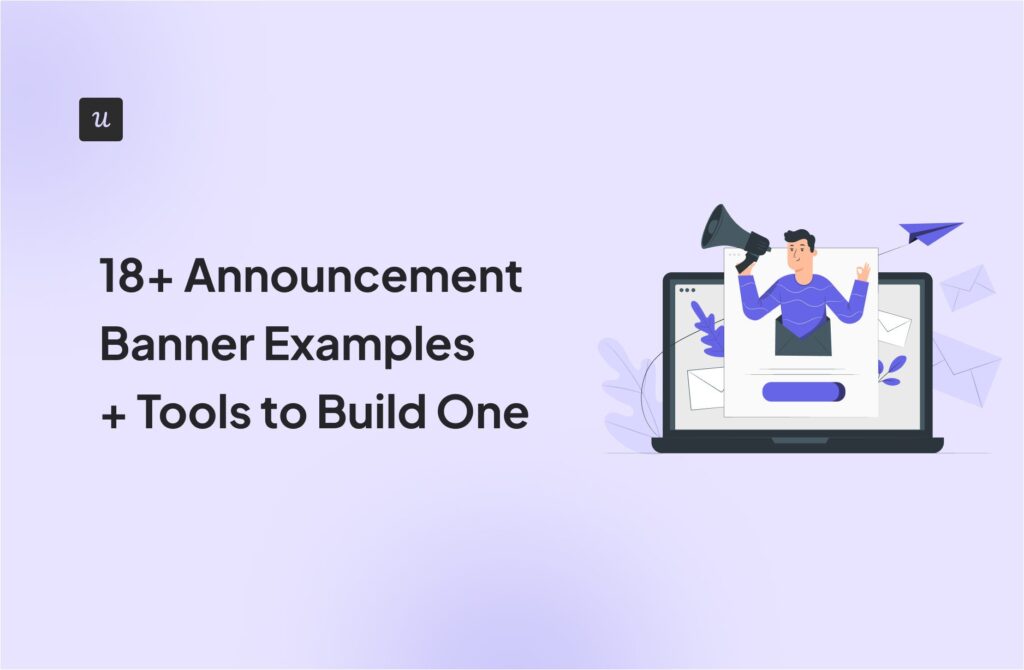
Product data capture is essential for SaaS companies looking to understand user behavior, optimize user experiences, and drive product growth.
However, the process isn’t without its challenges. From choosing the right data capture methods to navigating complex tools, SaaS companies must balance the need for detailed insights with the reality of technical constraints.
In this post, we’ll explore the common challenges faced in product data capture, the most effective methods to overcome these hurdles, and the tools that can help you streamline the data collection process.
Try Userpilot Now
See Why 1,000+ Teams Choose Userpilot

What is product data capture?
Product data capture is the process of collecting, organizing, and managing information about your product.
For SaaS companies, this means tracking and analyzing data about user interactions. It covers areas like feature usage, in-app event completion, purchase history, and other relevant information.
Benefits of product data collection
Among other benefits, an efficient data collection system helps you make better business decisions, create personalized customer experiences, and eliminate friction.
Let’s discuss these benefits in detail:
- Improve business decision-making: By tracking how customers interact with your software, it becomes easier to spot which features are resonating with customers and which ones are underperforming. This allows you to prioritize product development efforts and improve product performance.
- Personalize user experiences: Like most SaaS tools, your product likely attracts diverse users with varying needs. Generic experiences won’t effectively cater to this diverse user base. However, by collecting relevant data, you can understand customer needs and create personalized experiences that align with their preferences, helping them make the most of your tool.
- Identify friction points in the user journey: Data capture helps you visualize the entire customer journey and pinpoint areas where users encounter difficulties or drop off. Addressing these friction points will create a smoother, more enjoyable customer experience that encourages continued use and reduces churn.
Main data capture methods
SaaS companies typically implement one or more of the following data capturing methods:
Manual data capture
This is the traditional, hands-on approach in which humans are directly involved in collecting and organizing product data. It includes activities like manual data entry into your CRM or manually setting up event tracking via code.
While this method provides a high degree of control over the data capture process, ensuring accuracy and validation at each step, it’s inherently time-consuming.
Manual data capture can be a suitable option for small datasets. However, as the volume of data grows, the process becomes increasingly inefficient and unsustainable.
Automated data capture
This method uses software to automatically track and record user behavior without requiring manual effort. For instance, you can use a tool like Userpilot to auto-capture user clicks, text inputs, and form submissions, then use all that data to inform customer experience improvements.
Automated data capture offers significant advantages in terms of speed, efficiency, and accuracy since you don’t have to do anything after embedding a code snippet once.
Some people dislike this method because of the trade-off: automated systems can overlook subtle user behaviors that you might be interested in tracking. Plus, they may sometimes capture irrelevant data and cause information overload. However, modern analytics tools offer features that address these problems.
Outsourced product data collection
This third method involves hiring third-party services to collect and analyze product data on your behalf. It’s often used when specialized expertise is needed for the data points you’re tracking or when in-house resources are insufficient.
For example, a startup could partner with an external agency to conduct in-depth market analysis and customer segmentation while the internal team focuses on product development.
Outsourcing can be cost-effective and allows your product team to access specialized skills and advanced tools that might not be available in-house. However, it may result in potential data privacy and security issues.
5 Ways to capture customer data
Implement the following strategies to gather information on the customer experience with your product:
Collect data with user feedback surveys
Surveys are a direct line of communication with your users, allowing you to gather qualitative and quantitative data.
Qualitative survey data provides rich insights into user sentiments, opinions, and motivations, while quantitative data offers quick, measurable metrics for analytics. You’ll often need both data types to gain a comprehensive understanding of the customer experience.
For example, an NPS survey asking users their likelihood of recommending you to others can help you quickly gauge customer loyalty, but it’s not enough to understand exactly what’s going on.
Pairing that quantitative survey with a follow-up question that asks them to explain the reasons for their NPS rating will give you more depth.

Armed with this extra data, it becomes easier to implement data-driven product enhancements.
That said, the best way to maximize feedback surveys is to trigger them contextually at different points in the customer journey. For instance, send periodic satisfaction surveys (e.g., monthly) to capture evolving user sentiment, and use churn surveys to understand why some customers are leaving.
Track user behavior with in-app events
In-app events are specific actions that users take within your product.
These events can range from simple interactions like clicks and hovers to more complex interactions such as completing an onboarding flow, performing account upgrades, or contacting support.
You can use analytics tools to implement event tracking and analyze specific aspects of product usage.

Collect product data through A/B tests
A/B testing is a method where two versions of a product feature, such as a button or onboarding flow, are compared to determine which one leads to higher conversion rates among users.
Users are randomly divided into two groups, with one group interacting with the original version (A) and the other with the modified version (B). As users engage with the product, their interactions are tracked.
This method collects various types of data, including engagement metrics (such as clicks and page views), conversion rates, user behavior patterns, and performance data (like loading times).

Use session recordings to capture product interactions
Session recordings provide playback of a user’s actions, showing you exactly how users navigated through your site, what they clicked on, how they scrolled, and where they might have encountered issues.
By analyzing these recordings, you can gain valuable insights into user behavior, identify areas where users struggle, and make informed decisions to improve the user experience.

Monitor comments on social media and third-party platforms
The good thing about social media and third-party platforms like review sites is they offer unfiltered feedback you often can’t find anywhere else.
Comments on these platforms provide a real-world perspective of how users see your product, complementing the data you gathered through direct channels.
You can automate this type of data capture by investing in social media management tools like SproutSocial that track mentions and centralize all data in a single hub.

Challenges in product data capture
Data capture is not always a smooth process, especially for companies with a large customer base. Here are some of the common challenges most SaaS companies face:
- Data volume: SaaS products often generate massive amounts of data. Managing this sheer volume can be overwhelming. Storage costs, processing power, and efficient retrieval mechanisms become critical considerations.
- Quality: Inaccurate or incomplete data can lead to flawed conclusions and misguided decisions. Data discrepancies from manual errors, inconsistencies across different data sources, or outdated information can further impact data quality.
- Data governance: Proper data governance involves creating policies and procedures to ensure data is managed correctly. In SaaS, this challenge is particularly complex due to the need to comply with various regulations (such as GDPR) and to protect user privacy. Poor data governance can lead to data breaches, legal penalties, and loss of customer trust.
- Data fragmentation: SaaS teams often rely on a multitude of tools and platforms, each generating its own data silos. This fragmentation makes it challenging to get a holistic view of product usage and customer behavior.
Best data capture technologies
Ready to start tracking customer data? Here are some of the best tools for SaaS:
Userpilot
Userpilot is a product growth platform that helps SaaS teams understand user behavior and drive feature adoption.
With Userpilot installed, you can start automatically recording user clicks, text inputs, and form submissions. These actions are recorded under “Raw” events:

As the name suggests, you can’t do more with raw events because they show minimum information—what event occurred and when.
To get more event data, you’ll need to label the events you’re interested in tracking. You can do this by clicking the “Label Event” button, which will open a dialog box like the one below, allowing you to name your event and add a description.

With your events clearly labeled, you can perform extra functions like customer segmentation, retroactive analytics, event-based triggering, and much more.
For example, imagine you created an event labeled “Edited Invoice” to track the number of new users who clicked to edit their invoice in your tool. This is what the analytics will look like:

From the above, you can segment users by factors like engagement period and trigger contextual in-app guides, prompt an upgrade, etc.
Additionally, Userpilot allows you to group several events into a custom event and track milestones based on your product’s unique user journey.
Pendo
Pendo is a product experience tool that helps businesses understand and guide users within web and mobile applications.
The platform automatically tracks common interactions, such as page loads, clicks, focus changes, and form submissions, to provide insights into how users navigate your product.
As with Userpilot, Pendo doesn’t provide additional details for auto-captured events until you clearly define what you need.

PostHog
PostHog is an open-source product analytics platform that helps businesses understand user behavior.
While it has an auto-capture feature that automatically tracks basic user interactions like clicks, page views, and form submissions, more advanced or specific tracking typically requires custom instrumentation using PostHog’s JavaScript, Python, or API libraries.
For example, if you want to track specific events or user properties that aren’t captured automatically, you’ll need to write custom code to send these events to PostHog.
Additionally, integrating PostHog into your application and setting up the environment will also require some coding knowledge. However, the platform is designed to be developer-friendly, with extensive documentation to guide the implementation process.

Conclusion
Effective data capture is key to successful SaaS product management.
By tracking and understanding your customers, you can deliver more personalized experiences, stay ahead of the competition, and foster long-term loyalty.
Userpilot can help if you’re looking for a tool to automate this process. Book a demo today and see how our tool can help you simplify product data capture without writing a line of code!








